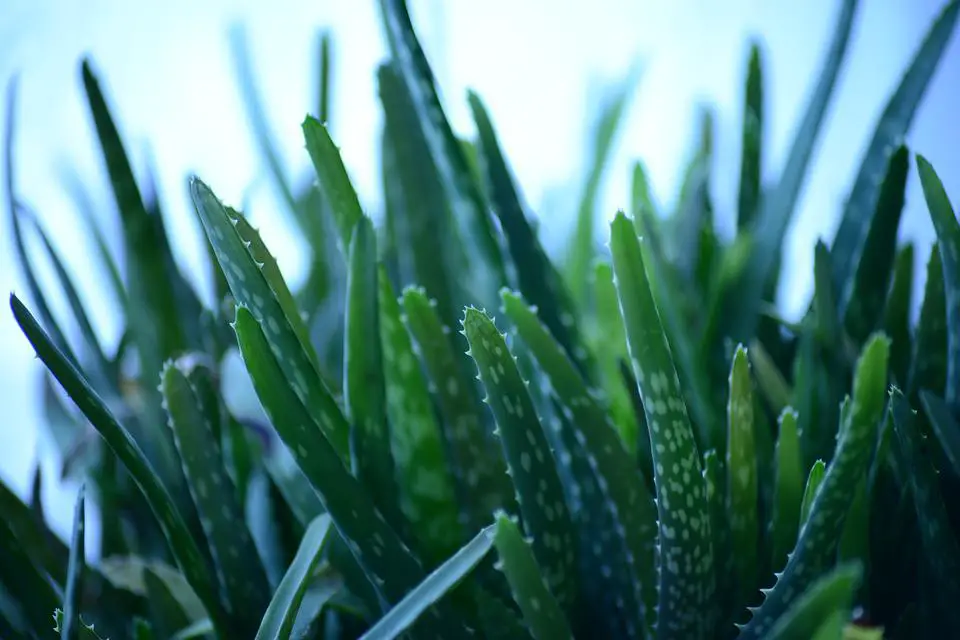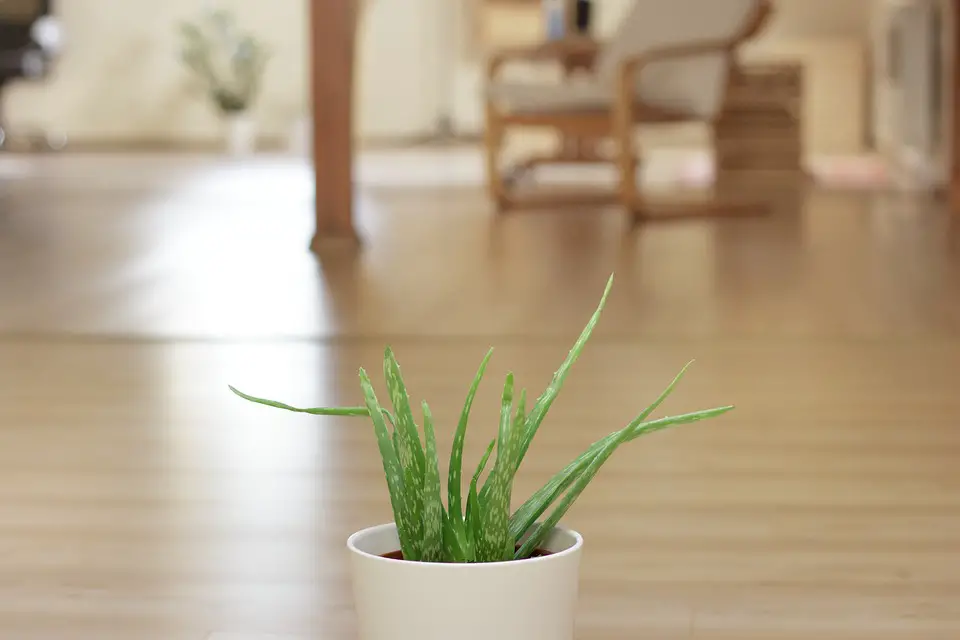Introduction
The Aloe Vera is a popular plant that has many folk remedies. Many of its therapeutic effects have been proven by science and by the layman, but there are still a lot of research that needs to be done to fully understand the many benefits of the Aloe. In the mean time the gel of the aloe, more specifically the Aloe Vera plant, is growing more in popularity. It is even used in many commercial products, such as baby wipes, skin creams, washing liquids, toilet paper, and shampoos. Heavy advertisement has helped the Aloe Vera plant become a household name and help popularize the products that contain it. In this article, we will look at why the Aloe is considered a miracle plant and explain how it is grown and cultivated.
The Aloe Plant is a Wonder Plant
The Aloes is another wonder plant I am pleased to write about. It is not only a decorative plant in the garden or around the house, but also it is known for its remarkable healing potency throughout the ages, as far back in the early civilizations.
The Aloes Plant
There are about 400 species of the Aloe, some more succulent than others. It should be noted that the Aloe is not a cactus, but a member of the aloaceae, related to the liliacea family, which includes onion and garlic. It is ideally grown in tropical and subtropical regions. They are very adaptable to the environments and you could find them in dry deserts, under waterfalls, on hillsides, and on cliffs.
The species also vary in size, from a few inches to many tens of feet. The Aloe is known for its long, hard, sword-shaped, fleshy green leaves that grow in a rosette pattern straight from the ground, sharp points and an array of barbed spikes on each leaf’s edge. The plant’s short stems are hidden by the leaves. A mature Aloe plant can have between 20 and 30 leaves. When the plant blooms, its flowers (which could vary from red, orange, yellow and even white) appear on a central leafless stem high above the gel-bearing leaves. The Aloe’s leaves can reach a height of around 2 or 3 feet and have a width of 3-4 inches at its widest point. One leaf could weigh approximately 3 to 4 pounds.

The leaves have three layers: a rind, a sap layer (bitter layer), and a mucilage layer that contains the inner pulp or gel fillet. It should be noted that the sap layer contains the yellow-brown exudate (referred to as the aloin) which easily drips from the tissues when cut. This layer is the bitter part of the plant and has purgative tendencies. However, the aloin extract is used for kidneys stones and as a stool softener.
The most common variety of the Aloe plant is the Aloe barbadensis miller (commonly known as Aloe Vera, “true aloe”, “aloe vera linne”, “first aid”, or “miracle plant”) which is particularly found in the West Indies, but it is commercially grown in the Americas, Asia, South Europe, Africa, and Australasia. It is also known as the “plant of immortality” (by the ancient Egyptians) and as the “elixir of longevity”.
The Aloe Vera Healing Properties
The Aloe Vera plant has many medicinal properties. It has a multitude of uses. It is the colourless material (referred to as the gel) within the inner pulp of the aloe plant, particularly of the Aloe Vera plant, that has curative properties. Another variety is the Aloe arborescens which according to Fr. Romano Zago in his book “Cancer Can Be Cured” is most effective in curing cancer.

The Therapeutic and Health Benefits of Aloe Vera Plant
The gel from the Aloe plant is a proven healing tonic for the body and nervous system. It also has anti-viral, anti-bacterial, anti-fungal, anti-inflammatory, nutritional and rejuvenating properties. It can also boost the immune system.
Specifically, it can be used to cure: acne, athlete’s foot, cold sores, eczema, dermatitis, psoriasis, arthritis, asthma, colitis, conjunctivitis, Crohn’s disease, diabetes, diverticulitis, hiatus hernia, IBS, lupus, chronic fatigue syndrome, ulcers, irritable bowel syndrome, etc. It can promote menstruation when suppressed; expel pinworms and ringworms after several doses; clean the colon, liver, kidneys, spleen, bladder; heal wounds, boils, burns, and sunburns; improve collagen repair in the skin; and regenerate new tissues. It can also be use extensively on animals. There are no known side effects of its use.
In Trinidad, it is also used in many folk remedies. From personal experience, it is used for cuts, burns, to take out inflammation from boils, for the cold, to heal internal bruising and for the hair. Externally, for cuts, burns and boils the aloe is placed directly onto the affected area. For the hair it is blended with olive oil and massaged into the scalp. Then a plastic cap is placed on the head so that the hair could “steam” for 15 to 20 minutes before washing.
Internally, the methods varied according to use. For internal bruises and wounds it would be taken with an egg white or it could be taken by itself. The old people said that this would surely remove any internal blood clots, or as they would say in Trini, “clad blood”. For the cold it can be taken by itself. An old man once instructed me on how I should take aloe. He told me to take the gel for 9 days right before I went to bed and it should be the last thing I had before going to sleep. And I was to sleep with my legs elevated. A strange thing happened when I did this. I didn’t have the flu, yet I was coughing up “blocks” of yellowish mucus. I guess the aloe really did its job!
Therefore it is one of the most efficient detoxifying agents. The Aloe Vera has an added bonus: it is an adaptogen. It has the ability to target specific problem or problems of the individual. This explains why people respond differently to Aloe Vera. However, you don’t have to be ill to take Aloe Vera. Aloe Vera helps the body reproduce fibroblast cells 6 to 8 times faster than normal. This rejuvenating ability of Aloe Vera can stimulate the production of natural collagen and improve the overall appearance of the skin by reducing the appearance of wrinkles.
The Composition of the Aloe Vera Plant
The Aloe plant has at least 80 chemical compounds. One of its active compound is called anthrquinones, which gives it its many healing properties. Aloe Vera is also rich in minerals, vitamins, amino acids, monosulfonic acid, enzymes, and polysaccharides (including glycoproteins and mucopolysaccharides). It contains the following: Vitamin C, Vitamin E; salicylic acid, saponins, sterols, minerals: calcium, chromium, copper, iron, magnesium, potassium, phosphorus, sodium, zinc, lecithin, Vitamin A, Vitamin B1, Vitamin B2, Vitamin B3, Vitamin B6, Vitamin B1, Vitamin C, Vitamin E, and folic acid.
This does not mean you should go out and buy all the products that contain Aloe Vera in them. It is uncertain whether these products really do create these effects. For this reason, there are many skeptics on the effectiveness of the Aloe Vera. But many of these products contain a diluted amount of the aloe gel. It should be noted that aloe gel should be the first ingredient on the label. Also, a product may contain the term Aloe Vera extract. This means that product may contain only 5% the Aloe gel.
Growing Your Own Aloe Vera Plant

The Aloe plant produces tiny replicas of itself that can be removed carefully and replanted. The Aloe plant can be grown outdoors or in a pot (preferably plastic or heavy terra-cotta). If grown properly, it will flower. Do not fertilize or over-water your Aloe plant or you can damage it. The soil must be sandy so as to ensure good drainage. the plant should be protected from freezing temperatures, so it is best as an indoor plant in temperate zones.
Once indoors, it requires the same treatment. Additionally, make sure that the container is large enough to hold it. The Aloe plant could soon outgrow its container in a short time. Also, ensure that the plant gets as much fresh air as possible. Position it near a window and in a room where there is low humidity. The plant stores its own moisture for days.
Harvesting the Aloe Vera Plant
It is best to take the gel fresh from the plant. But, you should take care when removing the leaves. If the gel becomes exposed to the elements it loses some of its unique nutritional and therapeutic properties. To prevent oxidation, the inner gel must be preserved and protected from excessive heat. First, remove the entire leaf. Slit the leaf lengthwise and remove the gel inside.
The modern technique of cold processing helps ensure the inner gel remains pure when the aloin is being extracted. However, not all of the aloin is extracted. The aloe vera can be made into a juice. The juice is a digestible version of the aloe vera gel and should contain at least 50% aloe vera gel. Please ensure that that there are no added artificial coloring or preservatives.
Conclusion
There is still much to be learnt about the Aloe plant and its many compounds. But its nutritional benefits cannot be denied. Besides the aloe being a great gift idea, it can play an integral part in improving our health by helping us combat many diseases and in helping us remove the thousands of toxins (such as pesticides, herbicides, food additives) we are exposed to, on a daily basis. The Aloe Vera plant, with its many nutritional properties, offers another aspect of holistic healing.

You will also like:
The Hidden Truth About Soda
Chadon Beni: Trini Herb Extraordinaire
How Media Affects Food Consumption
Coconut Oil: Oil From the Tree of Life
MSG (Monosodium glutamate)

